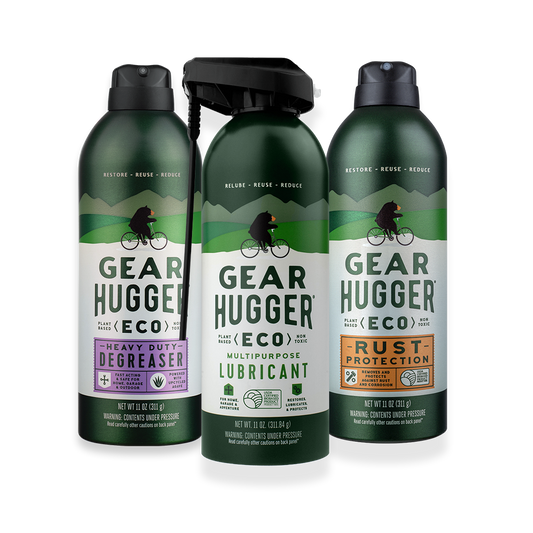One of the most important steps homeowners can take to avoid costly damage is to winterize their pipes. When temperatures drop, water inside your pipes can freeze, expand, and cause cracks or bursts, leading to leaks and potentially extensive water damage. Fortunately, with a little proactive care, you can prevent these issues and keep your plumbing system in top shape.
In this blog, we’ll walk you through how to protect your pipes and plumbing fixtures from freezing damage while also showing you how our sustainable products can help.
Step 1: Insulate Your Pipes
The first line of defense against freezing pipes is **insulation**. If you have exposed pipes in areas like your basement, attic, garage, or crawl spaces, wrapping them in pipe insulation is essential. This will help maintain a temperature above freezing even when outdoor temperatures dip into the teens or lower.
*TIP: For areas where insulating foam or pipe sleeves can’t fit, use our Multipurpose Lubricant. It can create a water-resistant barrier to protect pipes from moisture and help seal off any small cracks or gaps in your insulation material. Our formula is non-toxic, plant-based, and safe for both your pipes and the environment.
Items to Insulate and Treat:
-Exposed copper pipes: Lubricating and insulating copper pipes helps keep them free from rust and corrosion.
-PVC or plastic pipes: Ensure these materials are well-insulated as they are just as vulnerable to freezing as metal pipes.
-Faucets and outdoor spigots: Don’t forget the faucets connected to your outdoor water supply! Gear Hugger’s Multipurpose Lubricant can help prevent moisture buildup and make sure the faucet handles don’t freeze up.
Step 2: Check for Leaks and Cracks
Even the smallest crack in a pipe can lead to freezing and bursting when temperatures drop. Before winter sets in, it’s important to check all visible plumbing for leaks or damage, especially in areas where pipes are exposed to the elements.
If you discover any tiny cracks or signs of wear, our Rust Protection is the perfect solution. It’s designed to shield metal pipes from rust and corrosion while providing an extra layer of protection from moisture that could cause freezing. Simply spray it on the exterior of your pipes to create a barrier that will repel water and prevent further deterioration.
Items to Check and Protect:
-Metal piping (copper, steel, galvanized pipes): These pipes are susceptible to rusting over time, especially when exposed to water and cold weather. Rust can weaken pipes and lead to cracks.
-Faucet handles and valves: These are areas where water can sometimes leak out and cause freezing. Make sure to clean and treat them with Gear Hugger's Rust Protection to protect against corrosion.
-Outdoor hoses: Drain and store hoses to prevent freezing and potential damage to outdoor faucets.
Step 3: Drain Water from Outdoor Faucets and Hoses
One of the most common causes of frozen pipes in the winter is water left in outdoor faucets, hoses, or sprinkler systems. When temperatures drop, water left behind can freeze inside the hose or faucet, causing pipes to crack or burst.
Start by disconnecting garden hoses from outdoor faucets. Drain any remaining water from the hose and store it in a dry, warm place for the season. For outdoor faucets that are not frost-proof, make sure to shut off the water supply to these areas and open the valve to drain any remaining water.
For added protection, you can spray outdoor faucet valves with Multipurpose Lubricant to help prevent any sticking or freezing of moving parts. The lubricant will keep the valve functioning smoothly even in colder temperatures.
Items to Winterize:
-Outdoor faucets: If you have spigots or bibs on the exterior of your home, drain them fully and consider covering them with insulated faucet covers.
-Garden hoses: Store hoses in a dry location to prevent ice formation inside the hose.
-Sprinkler systems: Drain the sprinkler lines to avoid any water freezing inside the pipes.
Step 4: Clean and Protect Plumbing Fixtures
Winterizing isn’t just about pipes—your plumbing fixtures also need some attention. Faucets, valves, and other fixtures can become corroded or clogged over time, especially if they’ve been exposed to the elements.
Our Plant-Powered Degreaser can be used to clean your plumbing fixtures, removing any grease, grime, or buildup that could cause damage over the winter months. By ensuring that fixtures are clean and clear, you reduce the risk of blockages or malfunctioning parts that could freeze in extreme cold.
Items to Clean and Maintain:
-Faucets and valves: Remove any mineral deposits or buildup that could hinder the operation of your faucets. Clean them thoroughly with Gear Hugger's Degreaser.
-Shower heads: These are especially prone to mineral buildup. Use the Degreaser to break down deposits and ensure water flows freely.
-Kitchen and bathroom drains: Cleaning out grease or debris from drains before the cold weather hits can prevent blockages when temperatures drop.
Step 5: Ensure Proper Drainage Around Your Home
Finally, the area surrounding your home can also impact your plumbing during the winter months. If your yard is prone to flooding or pooling water near the foundation, make sure to take measures to direct water away from your home. Excess water around the base of your home can freeze in cold weather and cause structural or plumbing damage.
While this isn’t directly related to your pipes, ensuring good drainage is important to avoid any moisture seeping into your plumbing system or causing leaks. This may involve adjusting gutters, adding a drainage system, or regrading the soil around your home.
Winterizing your home’s pipes is an essential step in protecting your plumbing system from the damaging effects of freezing temperatures. With our complete suite of plant-powered products, you can confidently safeguard your pipes, plumbing fixtures, and outdoor water systems—all while being kind to the environment.
For more sustainable home maintenance tips, check out our Eco-Home Guide for easy swaps in your home, garage, and gear!





